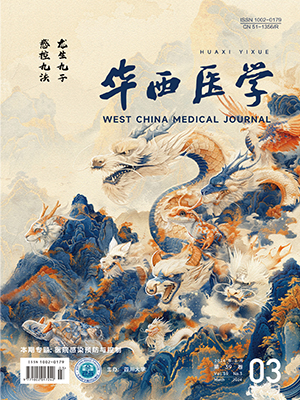| 1. |
Kokotilo KJ, Eng JJ, Curt A. Reorganization and preservation of motor control of the brain in spinal cord injury: a systematic review. J Neurotrauma, 2009, 26(11): 2113-2126.
|
| 2. |
Biswal B, Yetkin FZ, Haughton VM, et al. Functional connectivity in the motor cortex of resting human brain using echo-planar MRI. Magn Reson Med, 1995, 34(4): 537-541.
|
| 3. |
Zhu L, Wu G, Zhou X, et al. Altered spontaneous brain activity in patients with acute spinal cord injury revealed by resting-state functional MRI. PLoS One, 2015, 10(3): e0118816.
|
| 4. |
Pan Y, Dou WB, Wang YH, et al. Non-concomitant cortical structural and functional alterations in sensorimotor areas following incomplete spinal cord injury. Neural Regen Res, 2017, 12(12): 2059-2066.
|
| 5. |
王方永, 李建军. 脊髓损伤神经学分类国际标准(ASIA 2011版)最新修订及标准解读. 中国康复理论与实践, 2012, 18(8): 797-800.
|
| 6. |
Zheng W, Ge Y, Ren S, et al. Abnormal static and dynamic functional connectivity of resting-state fMRI in multiple system atrophy. Aging (Albany NY), 2020, 12(16): 16341-16356.
|
| 7. |
Liu Y, Xiong H, Li X, et al. Abnormal baseline brain activity in neuromyelitis optica patients without brain lesion detected by resting-state functional magnetic resonance imaging. Neuropsychiatr Dis Treat, 2020, 16: 71-79.
|
| 8. |
Bullmore Ed, Sporns O. Complex brain networks: graph theoretical analysis of structural and functional systems. Nat Rev Neurosci, 2009, 10(3): 186-198.
|
| 9. |
Sporns O, Chialvo DR, Kaiser M, et al. Organization, development and function of complex brain networks. Trends Cogn Sci, 2004, 8(9): 418-425.
|
| 10. |
Micheloyannis S, Vourkas M, Tsirka V, et al. The influence of ageing on complex brain networks: a graph theoretical analysis. Hum Brain Mapp, 2009, 30(1): 200-208.
|
| 11. |
Honey CJ, Thivierge JP, Sporns O. Can structure predict function in the human brain?. Neuroimage, 2010, 52(3): 766-776.
|
| 12. |
Wang J, Zuo X, He Y. Graph-based network analysis of resting-state functional MRI. Front Syst Neurosci, 2010, 4: 16.
|
| 13. |
De Vico Fallani F, Astolfi L, Cincotti F, et al. Cortical functional connectivity networks in normal and spinal cord injured patients: Evaluation by graph analysis. Hum Brain Mapp, 2007, 28(12): 1334-1346.
|
| 14. |
Min YS, Chang Y, Park JW, et al. Change of brain functional connectivity in patients with spinal cord injury: graph theory based approach. Ann Rehabil Med, 2015, 39(3): 374-383.
|
| 15. |
Nishimura Y, Onoe H, Onoe K, et al. Neural substrates for the motivational regulation of motor recovery after spinal-cord injury. PLoS One, 2011, 6(9): e24854.
|
| 16. |
Sang L, Qin W, Liu Y, et al. Resting-state functional connectivity of the vermal and hemispheric subregions of the cerebellum with both the cerebral cortical networks and subcortical structures. Neuroimage, 2012, 61(4): 1213-1225.
|
| 17. |
Chen Q, Zheng W, Chen X, et al. Reorganization of the somatosensory pathway after subacute incomplete cervical cord injury. Neuroimage Clin, 2019, 21: 101674.
|
| 18. |
Filipp ME, Travis BJ, Henry SS, et al. Differences in neuroplasticity after spinal cord injury in varying animal models and humans. Neural Regen Res, 2019, 14(1): 7-19.
|
| 19. |
Xu K, Liu H, Li H, et al. Amplitude of low-frequency fluctuations in bipolar disorder: a resting state fMRI study. J Affect Disord, 2014, 152-154: 237-242.
|
| 20. |
Dien J, Brian ES, Molfese DL, et al. Combined ERP/fMRI evidence for early word recognition effects in the posterior inferior temporal gyrus. Cortex, 2013, 49(9): 2307-2321.
|
| 21. |
Wegner C, Filippi M, Korteweg T, et al. Relating functional changes during hand movement to clinical parameters in patients with multiple sclerosis in a multi-centre fMRI study. Eur J Neurol, 2008, 15(2): 113-122.
|




